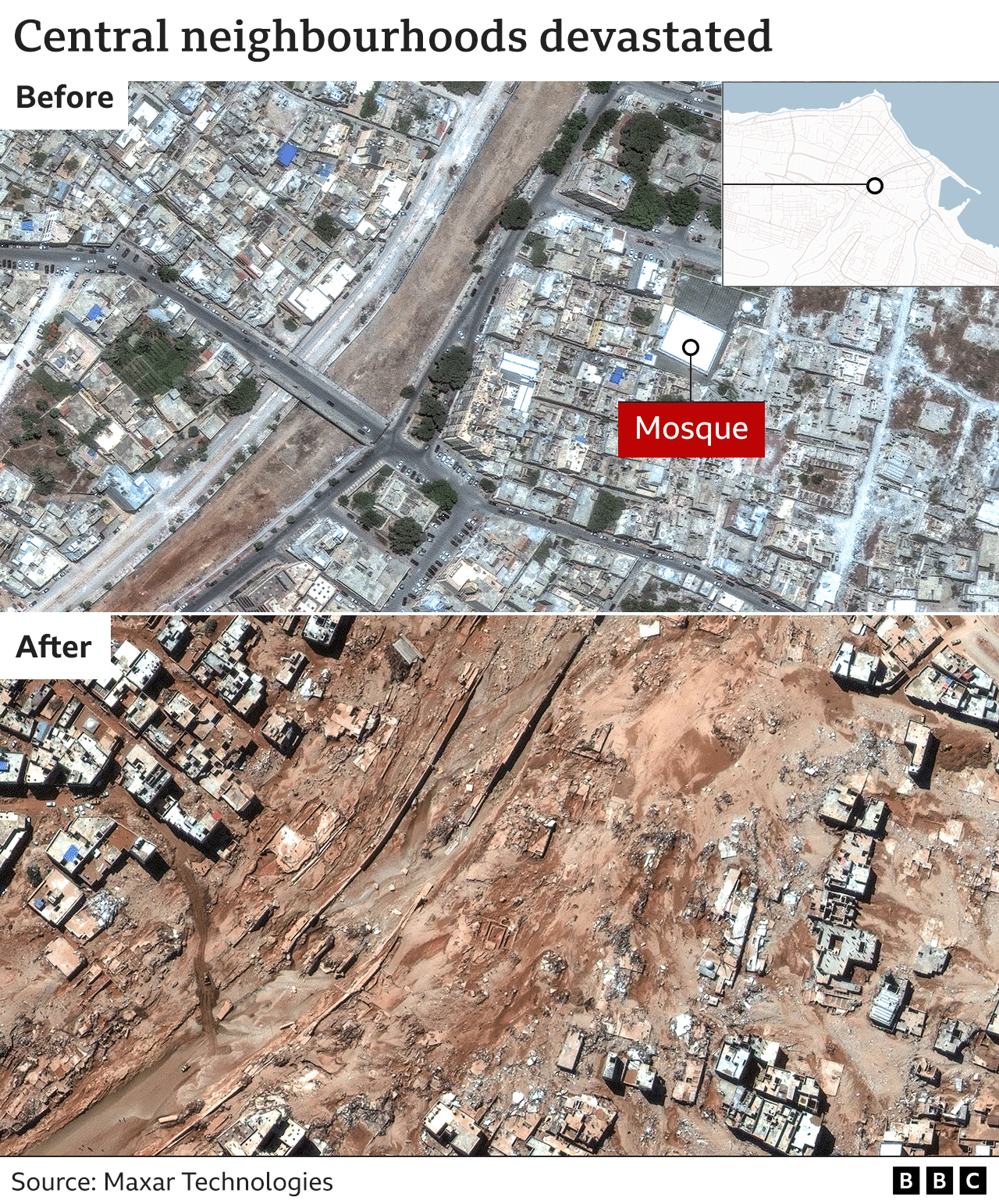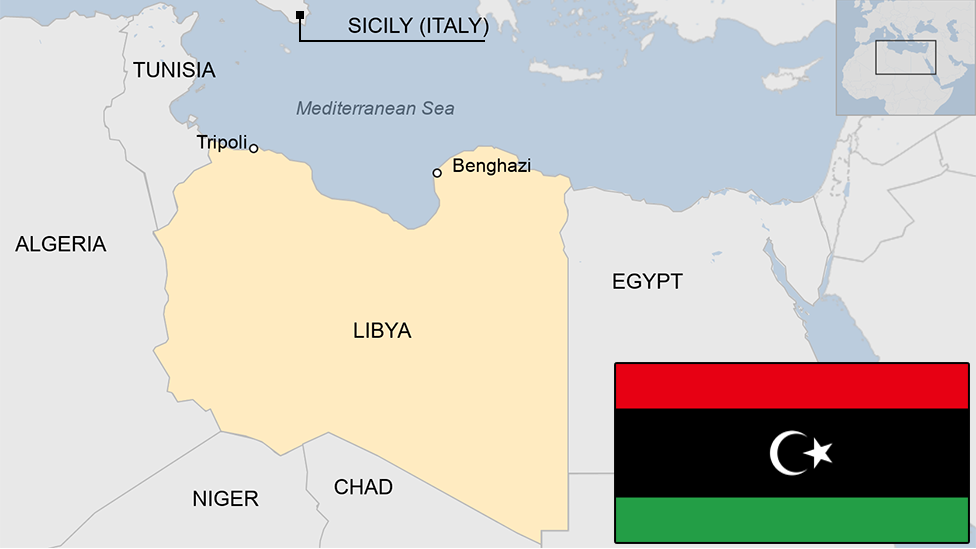Libya floods: Why damage to Derna was so catastrophic
- Published

The Derna flooding death toll could reach 20,000 according to the city's mayor.
Entire neighbourhoods disappeared into the sea as a huge tsunami-like torrent of water swept the port city in eastern Libya.
Survivors described the situation as "beyond catastrophic".
Your device may not support this visualisation
BBC Verify and the BBC's Visual Journalism team have been analysing some of the reasons why the floods caused such catastrophic damage in Derna.
Record rainfall
The water was brought by Storm Daniel which hit Libya on Sunday.
The storm - a Mediterranean hurricane-like system known as a medicane - brought more than 400mm of rain to parts of the north-east coast within a 24-hour period.
That is an extraordinary deluge of water for a region which usually sees about 1.5mm throughout the whole of September.
Libya's National Meteorological Centre says it is a new rainfall record.
Satellite data shows the extent of some of the rainfall across the region - although in many places the amount recorded on the ground was higher.

It's too early to attribute with certainty the severity of this storm to rising global temperatures.
However, climate change is thought to be increasing the frequency of the strongest medicanes.
Prof Liz Stephens, an expert in climate risks and resilience at Reading University in the UK, says scientists are confident that climate change is supercharging the rainfall associated with such storms.

Two dams overwhelmed
The Wadi Derna river runs from Libya's inland mountains, through the city of Derna and into the Mediterranean.
It is dry for much of the year, but the unusually heavy rain overwhelmed two crucial dams and destroyed several bridges.

Residents of the city, who had been ordered by the local authorities to stay in their homes, reported hearing a loud blast before the city was engulfed in water.
"The dams would have held back the water initially, with their failure potentially releasing all the water in one go.
"The debris caught up in the floodwaters would have added to the destructive power," says Prof Stephens.
Your device may not support this visualisation
The upper dam had a storage capacity of 1.5 million cubic metres of water, whilst the lower dam could hold 22.5 million cubic metres.
Each cubic metre of water weighs about one tonne (1,000kg), so 1.5 million cubic metres of water would weigh 1.5 million tonnes.
Combine that weight with moving downhill, and it can produce enormous power. Witnesses have said that the waters were nearly three metres in places.
It is estimated that six inches (20cm) of fast moving flood-water is enough to knock someone off their feet, and 2ft (60cm) is enough to float a car. So it is no surprise that whole buildings were taken out in the flood.

Experts say it's too early to know whether the extreme rainfall was simply too much for the dams to handle, or whether the condition of the structures also played a role.
Based on their observations, the dams are likely to be made from dumped and compacted soil or rocks, which is not as strong as concrete.
"These dams are susceptible to overtopping [when water exceeds a dam's capacity], and while concrete dams can survive overtopping, rockfill dams usually cannot," says Exeter University's Prof Dragan Savic, an expert in hydraulic engineering in the UK.
It appears that the upper dam failed first, according to structural engineer Andrew Barr.
He says the water then probably flowed down the rocky river valley towards the lower dam before overwhelming it, resulting in the sudden and catastrophic flooding of the city which lies trapped between mountains and the sea.
Your device may not support this visualisation
A research paper published last year on the hydrology of the Wadi Derna Basin highlighted that the area "has a high potential for flood risk", on the basis of likely historical flood volumes, and that the dams "needed periodic maintenance".
The report, by civil engineering expert Abdelwanees AR Ashoor from Libya's University of Omar Al-Mukhtar, said that "the current situation in the Derna valley basin requires officials to take immediate measures, carrying out regular maintenance of the existing dams, because in the event of a huge flood, the result will be disastrous for the residents of the valley and the city".
Several experts have highlighted the possible role that the political instability in Libya has played in the upkeep of the dam.
As rescue efforts in the city continue, Libyan journalist Johr Ali, who has spoken to survivors in the city, told the BBC: "People are hearing the cries of babies underground, they don't know how to get to them.
"People are using shovels to get the bodies from underneath the ground, they are using their own hands. They all say it's like doomsday."


Produced by Chris Clayton, Mike Hills, Paul Sargeant, Tural Ahmedzade, Kady Wardell, Gerry Fletcher, Filipa Silverio and Erwan Rivault. Additional reporting: Mark Poynting, Peter Mwai, Alex Murray, and Esme Stallard.


Related topics
- Published14 September 2023

- Published13 September 2023

- Published13 September 2023

